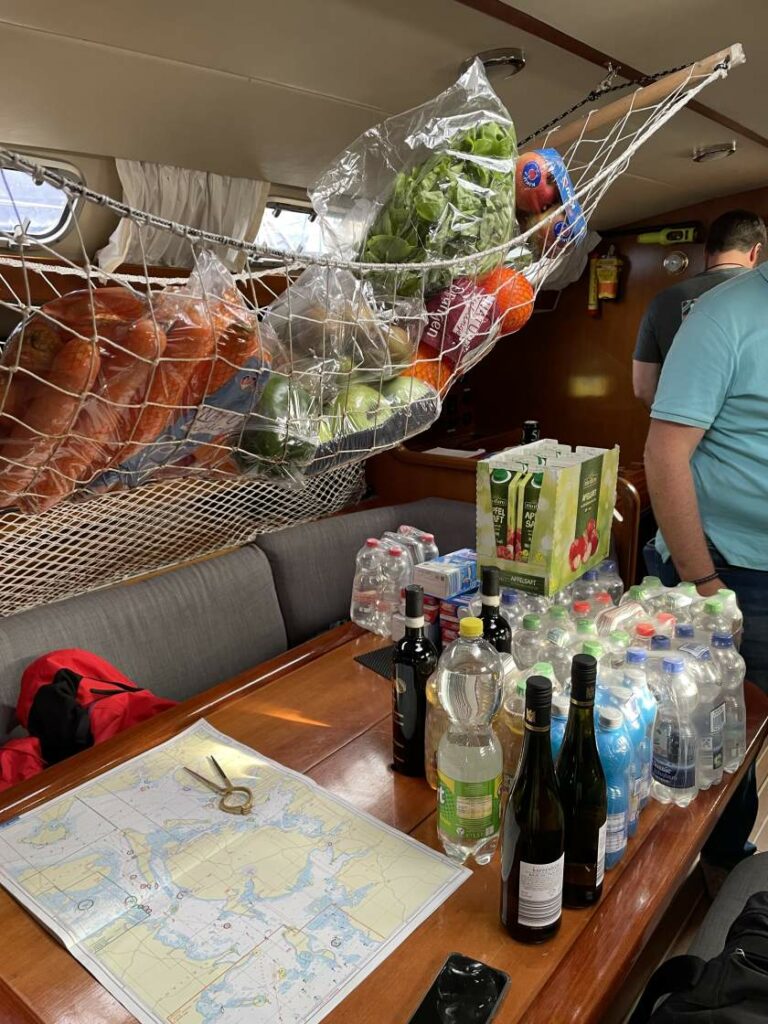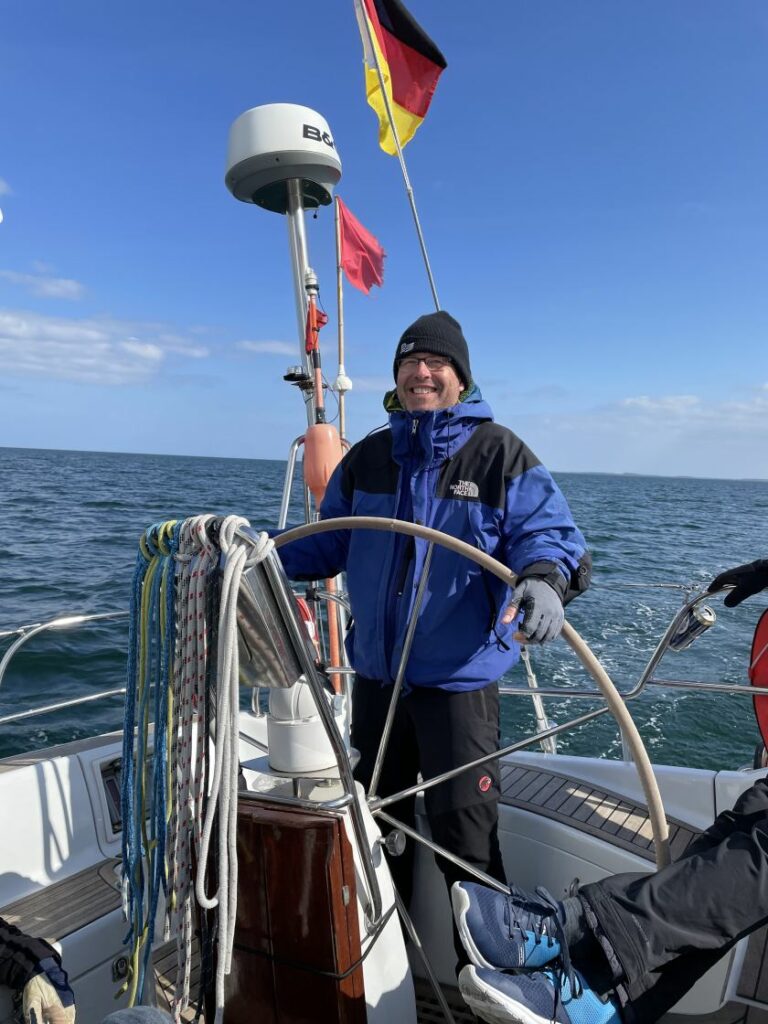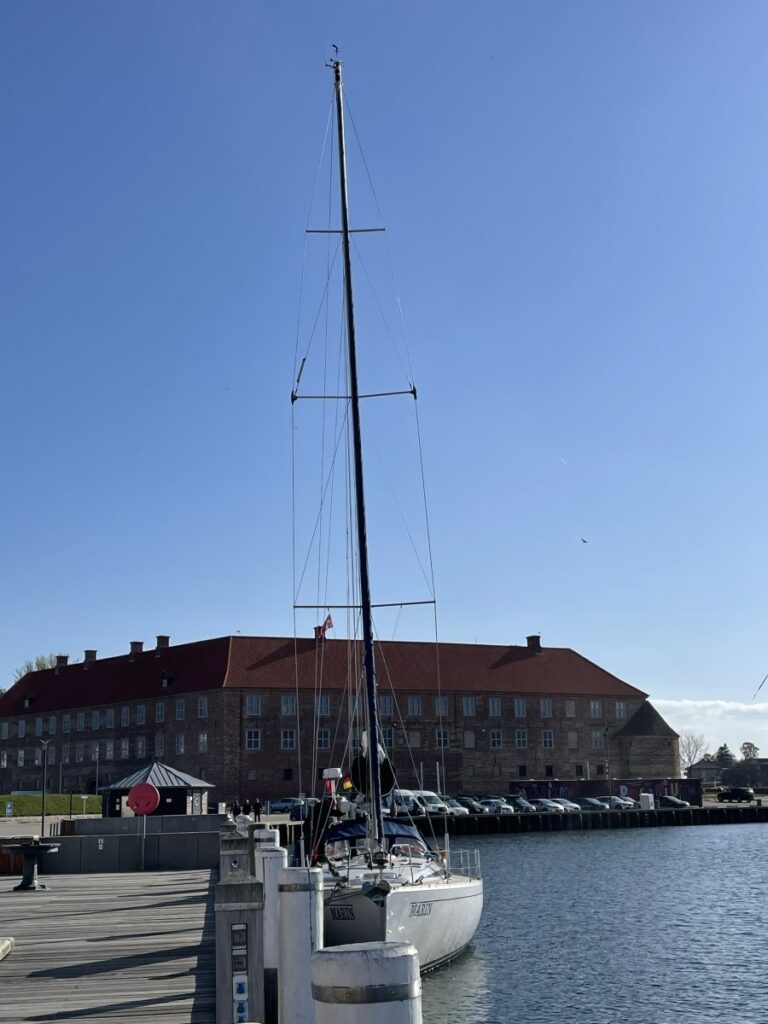


Aufgabenstellung
Ausgangspunkt war ein bei Erstellung des Gebäudes im OG realisiertes Bad mit einem Grundriss von ca. 210 cm x 310 cm (Breite x Tiefe). In klassischer Anordnung war hier eine 170cm Badewanne in der Breite entlang der Giebelwand (1 Fenster) eingebaut, der Waschtisch zentral an der linken Längswand, an der rechten Längswand: WC und Duschkabine (80 x 90cm), wobei die Dusche in der rechten Raumecke neben der Tür verbaut wurde. Zu- und Ableitungen werden in einem Versorgungsschacht in der linken Raumecke an der Giebelwand geführt. In Konsequenz zu dieser Anordnung wurden Abwasserleitungen in Vorwandinstallationen geführt, insbes. die Ableitung der Dusche mit einer Gesamtlänge von über >500cm. Dieser Punkt war mit erheblichen Problemen beim Duschablauf verbunden.
Ziel war es den Raum durch Versatz einer nicht-tragenden Wand (rechte Längswand) auf eine nahezu quadratische Grundfläche (310 x 310 cm) und 2 Fenster zu vergrößern. Zuvor war in einem, den benachbarten Raum betreffenden, ersten Bauabschnitt bereits die neue Raumwand in Trockenbauweise aufgebaut worden, so daß nach Abriss der alten Bad-Innenwand der neue Raum mit 2 Fenstern nutzbar war. Nachfolgende Grundanforderungen waren danach zu realisieren:
- bodengleiche, begehbare Dusche, minimale Breite 90cm
- min. 180cm Badewanne mit eingebautem Einlauf, Zentralablauf
- der Verzicht auf pflegeintensive Glaselemente, insbes. bei der Duschabtrennung
- Waschtisch und WC in frei hängender Anordnung
- Sanitärarmaturen als Unterputz-Installationen
- abgehängte Decke zur Aufnahme von Beleuchtung und Audioinstallation
- Grundoptik: Beton/Anthrazit + Edelstahl
- Minimierung gefliester Flächen (nur Boden + Dusch/WC-Bereich)
- diffusionsoffener Sumpfkalk Wandputz
Planung
In einem ersten Schritt wurde im Frühjahr 2021 mit mehreren, auf Sanitärplanung & Sanierung spezialisierten Firmen im Rhein-Neckar Raum Kontakt aufgenommen zur Durchsprache von Projektzielen und Ausführungsoptionen. Im Verlauf von 2-3 Monaten zeigte sich jedoch, dass die präsentierten Planungsideen einerseits nur zu Kompromissen bei der Erreichung der Ziele nutzbar waren, auf der anderen Seite gleichzeitig der Kostenrahmen bei Durchführung duch Generalunternehmer – auch bei einfacher Ausstattung – erheblich überzogen wurde. Nach dem ich mir selbst “die Karten gelegt” hatte bzgl. technischer Komplexität, den Möglichkeiten eigenständiger Planung und der Koordination der verschiedenen Gewerke, entschloss ich das Projekt in Eigenregie anzugehen. Grundstein hierfür war der Vorschlag eines befreundeten Junior-Architekten alternativ zu einer Anordnung der Sanitärobjekte entlang der Raumwände, eine zentrale “T”-Struktur für Waschtisch, WC und Dusche in Erwägung zu ziehen. Was zunächst bei mir für zahlreiche Falten auf der Stirn sorgte, zeigte sich bei näherem Spiel mit den Formen und Dimensionen als geniale Idee !
Auf der Suche nach einer 2D CAD Software wurde ich bei LibreCAD schnell fündig. Nach kurzer Lernkurve und unter Nutztung der im Internet frei erhältlichen technischen Zeichnungen von Geberit, Hans Grohe und Villeroy & Boch, konnte ich das System effizient für Bemaßung und Planung der Komponenten nutzen. Dabei zeigten sich vier entscheidende Teilprobleme:
- um Zugang und Breite der WC/Duschnische zu maximieren, mussten die beiden Schenkel der “T”-Querwand eine möglicht geringe Gesamtbreite aufweisen. Der kritische Faktor hierbei war der Durchmesser und die Führung der WC-Abwasserleitung, welche in Richtung des Versorgungsschachtes zunächst innerhalb des “T”-Körpers geführt wurde, bevor sie bei notwendigem Gefälle innerhalb des Bestands-Estrichbodens (Isolierestrich, 10.5cm über Bodenplatte) weitergeführt werden konnte. Massgeblich waren hierfür: DN90 Rohr, min. 2.5% Gefälle im Estrich, Trockenbau mit 50mm Ständerwerk und doppelter Beplankung (2 x 12.5mm). Grundsätzlich zeigte sich, dass eine bodengleiche Dusche und WC-Entwässerung nur realisiert werden konnte, wenn hierfür die Gesamthöhe des Estrichs über Bodenplatte im Bereich der Dusche und Abwasserführung erhöht würde. Die Entscheidung fiel nach intensiver Planung zu Gunsten einer Raumstufe von 7.5cm Überhöhung im Bereich der Duschnische und nahezu mittig einer über’s Eck eingebauten Badewanne. Insgesamt konnte eine Aussenbreite der “T” Schenkel von lediglich 18cm realisiert werden ! Um die untersuchten Abhängigkeiten zu illustrieren, sei an dieser Stelle noch erwähnt, daß die Höhe der Raumstufe ebenso Abstimmung bedarf bzgl. des raumhohen Fliesenspiegels (120x60cm Grossformatfliesen, liegend) im Bereich der Dusche hin zur abgehängten Raumdecke.
- Bei der Planung der Wanne zeigte sich rasch, daß ein Eckeinbau nahe des Versorgungsschachtes die ideale Lösung war. Um den Platz zwischen Wanne und Waschtischwand zu optimieren, bot sich der Einsatz einer Sechseck-Form an, welche letztendlich bei Villeroy & Boch 6-Eck Squaro (190 x 80 cm) gefunden wurde. Um den Platz zwischen Wanne und Wandecke möglicht ohne tote Winkel und “nasse Ecken” elegant zu nutzen, habe ich mich entschieden die Verkleidung des Versorgungsschachtes ebenfalls im 45° Winkel entlang der Badewannen-Längsseite auszuführen.
- Nachdem die Lage der “T” Waschtischwand durch Anforderung der lichten Duschbreite gegeben war, musste kritisch bedacht werden, wie die Dimension des hängenden Waschtisches die Durchgangsbreite an der engsten Stelle zwischen der linken Ecke des Waschtisches und der Badewanne beeinflusst. Es erwies sich als ideal und optisch reizvoll die vertikale Mittelachse der Waschtischinstallation (Tischaufhängung, Unterputz-Armaturen, Steckdosen, Spiegel) um ca. 20cm nach rechts aus der Mitte der Waschtischwand zu versetzen.
- Nach Ermittlung der Lage der Einrichtung, musste die Deckeninstallation bzgl. Anzahl und Symmetrie der Deckenausschnitte für Leuchtmittel und Lautsprecher geplant werden. Neben einem 30x30cm Niedervolt Farb-LED Panel mittig über der Badewanne kamen dimmbare 230V LED Spots IP44/65 von Paulmann zum Einsatz. Entscheidend ist an dieser Stelle die Abstimmung zwischen den erforderlichen Deckenöffnungen und der Lage des Trägerwerkes an der Grenze zwischen Deckenplatten.
Die Planungsphase wurde erleichtert durch mehrere Zwischengespräche mit den zu diesem Zeitpunkt bereits favorisierten Gewerken, v.a. der Sanitärinstallation, welche die kritischsten Abhängigkeiten in der Realisierung aufwies. An zweiter Stelle sei der Tockenbau (Wand + Deckenkonstruktionen) genannt, der bzgl. Platzbedarf und erforderlichen Abständen im Ständerwerk einige harte Einschränkungen vorgibt.



Ausführung
Nach Abschluss der “vorhersehbaren” Planung und Einholen der Angebote der Gewerke wurde der erforderliche Zeitaufwand in Arbeitsleistung und evtl. Trockenzeiten und Abhängigkeiten angefragt und in einer konsolidierten Projektplanung zusammengefasst, unter den beteiligten Partnern geteilt und mit Termin beauftragt. Es ergab sich eine Gesamtprojektdauer von ca. 5 Wochen, wobei ca. 1 Woche auf Trockenzeiten im Fliesenaufbau und im aufwändigen Sumpfkalkputzverfahren entfiel. Kritisch war die Bestellung der Sanitärkomponenten, da die Hersteller in Folge stockender Lieferketten Vorlaufzeiten von mehreren Wochen benötigten. Also stellten wir uns mal auf gut 5 Wochen Duschen bei Freunden und im Sportstudio ein 😉
Es grenzt zurückblickend vielleicht an ein Wunder, aber genauer betrachtet war es wohl ein Produkt guter Planung und Kommunikation sowie einem rundum professionellen und kollegialen Verhalten der beteiligten Gewerke: Die Arbeiten gingen ohne nennenswerte Überraschungen und Komplikationen voran und alle geplanten Arbeitszeiten konnten eingehalten bzw. sogar leicht unterboten werden. Gleiches galt erfreulicherweise auch für die Angebotspreise. Am Ende fehlte lediglich der Keramik-Waschtisch von V&B, der auf Grund von Produktionseinschränkungen erst 2 Wochen später geliefert und montiert werden konnte. No problem, wir erfreuten uns derweil schon intensiv an Wanne und Dusche !
Folgende Punkte sind mir als positive “Enabler” während der Ausführung noch in Erinnerung:
- Enge Abstimmung zwischen Trockenbau (TB) und Sanitär nach Erstellung des “T”-Körper Grundaufbaus: Da vertikale Streben im TB zunächst noch nicht fixiert wurden, konnte die Führung des WC-Abwasserrohrs im “T” und danach abwärts in den Estrich so optimiert werden, daß das Gefälle, die korrekte Ausdehnung des Estrichaufbaus und Stabilität des TB gewährleistet waren.
- Die Lage und Abhängigkeiten (Symmetrie !) der Komponenten (Steckdosen, Armaturen, Widerlager-Platten für Waschtischmontage) in der Waschtisch TB-Wand ist komplex und ist eng verbunden mit den möglichen Positionen für vertikale TB Träger. Hier zeigte sich, daß ein schnelles Reagieren (in der Praxis: Laptop mit LibreCAD im Einsatz direkt neben den Trockenbauern) auf konstruktiv notwendige Anpassungen des Ständerwerks sehr vorteilhaft war.
- Verputzer und Fliesenleger sind wahre “Künstler” ihrer Zunft und die Arbeiten (mit Großformatfliesen oder Sumpfkalkputz) handwerklich “heikel”. Hier war es gut für eine ruhige und ungestörte Arbeitsatmosphäre zu sorgen, insbes. was den sauberen Abschluss der vorangehenden Arbeiten (z.B. Fliesen und Decke komplett, vor Putz) angeht.
Abschließend danke ich allen Gewerken für die gute Zusammenarbeit und ihre hervorragende Arbeit !
Bilderverzeichnis
- Fenster: Joan Miró: “Bleu II”, Kunstdruck-Postkarte, Passepartout
- Badewanne: Paul Klee: “Fischbild”, Kopie auf Leinwand + Holzrahmen
- WC: Kaća Bradonjić, Carlo Rovelli, “Space and Time (or not?) in Loop Quantum Gravity”, Kunstdruck, Passepartout












